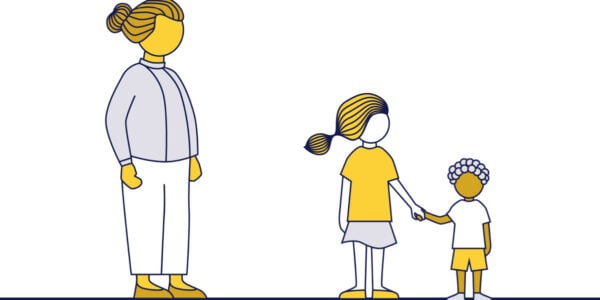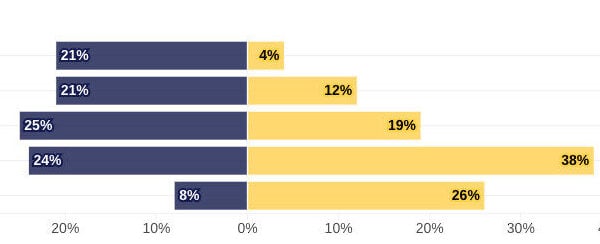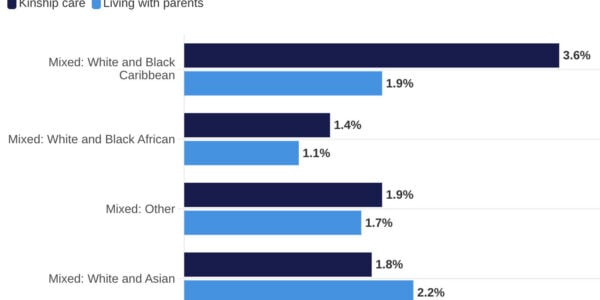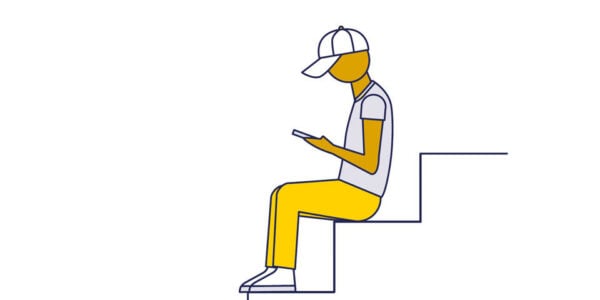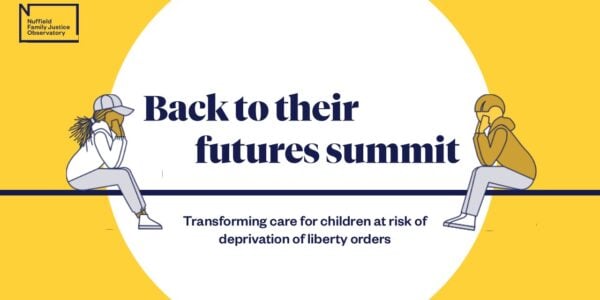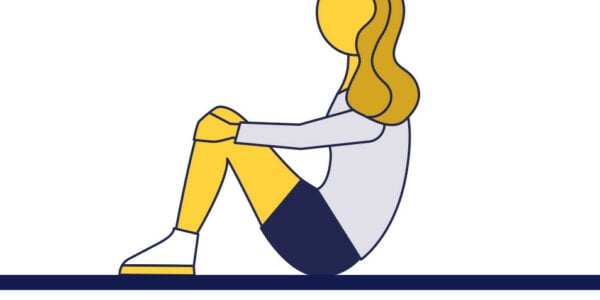In July 2022 the President of the Family Division launched the national deprivation of liberty court.
Based at the Royal Courts of Justice, it deals with all new applications seeking authorisation to deprive children of their liberty under the inherent jurisdiction and will run for a 12-month pilot phase initially. Nuffield Family Justice Observatory was invited to collect and publish data on these applications.
Since July 2022, we have published monthly briefings highlighting high level data trends: July and August, September, October, November, December, January, February, March, April and May.
This briefing highlights high-level data trends during the full 12 months of the court pilot.
About the data
The data reported in this briefing relates to all applications issued by the national deprivation of liberty court. It covers information included on the C66 application form – the form used to apply for an order under the high court inherent jurisdiction in relation to children. Data is extracted and recorded by court staff and analysed by Nuffield Family Justice Observatory.
Data caveats and limitations
Data is extracted on a monthly basis from a live data-recording system and reflects the most accurate information at the time of analysis; however figures are subject to revision. In some instances, data may be missing if it is not recorded on the application form. Missing data is excluded from analyses.
We report data at the application level. This may mean that if the same child is subject to more than one application, or the local authority makes multiple applications within a case, some children may appear in the data more than once.
Data relating to the number of deprivation of liberty applications is not available from another data source and it is therefore not possible to compare our data to alternative records. Due to potential differences in recording systems, caution should be exercised in comparing data from the national DoL court to data collected via different sources in previous years.
In the monthly data briefings, we are limited in reporting on information recorded in the application form only – this provides an indication of how many applications are being made each month but does not provide detailed information about the children subject to deprivation of liberty applications or the outcome of applications. Alongside this, we have published two detailed reports on the needs and characteristics of children subject to deprivation of liberty applications, and the legal outcomes of applications:
How many applications are there each month?
During the 12 months July 2022 to July 2023, the national DoL court issued a total of 1389 applications.
In some cases, a ‘repeat’ application is issued for the same child – for example, to extend or vary an existing order (e.g. if the child moves placement or additional restrictions on their liberty are sought). There have been 147 ‘repeat’ applications or cases that involve the same child.
This means that a total of 1249 children have been subject to DoL applications at the national DoL court since 4 July (including a very small number of applications for sibling groups).
On average, there have been 117 applications per month, with the highest number of applications issued in August 2022 (136 applications). In the most recent month, June 2023, there were 98 applications.
Who is making the applications?
The applications were made by 158 different local authorities and 18 other applicants (usually hospital or mental health trusts). Those issued by hospital trusts are usually to authorise restrictions of children’s liberty in hospital when the child may not be in the care of the local authority, or where the local authority is also a party in the case.
How does the number of applications vary by region?
Over the last 12 months, most local authorities in England (94.0%) and Wales (77.3%) have made applications to the DoL court to deprive children of their liberty, indicating widespread use across the country.
Between July 2022 and July 2023, just over a fifth (21.2%) of all applications were made by local authorities in the North West of England, followed by 16.8% of applications from local authorities in London, and 11.8% from local authorities in the South East. Local authorities in the North East have made the fewest number of applications (3.9% of the total). This pattern of regional variation has broadly remained the same since July 2022.
In order to explore this pattern of regional variation further, we also calculated the rate of children subject to DoL applications per 100,000 children aged 10 to 17 in each region of England, and in Wales. This provides an indication of the number of applications made per region while taking into account variations in the size of the population in each area.
The North West had the highest rate of applications, with 40 DoL applications per 100,000 children, followed by London (27 per 100,000), the South West (25 per 100,000) and the East Midlands (25 per 100,000). The East of England had the lowest rates, with 15 applications per 100,000 children.
England (24 per 100,000 children) and Wales (25 per 100,000 children) had very similar rates, indicating similar use of DoL applications across England and Wales.
There are multiple possible explanations for this variation in the use of DoL applications nationally, including variation in the number of children in care, variation in the needs of children and families, and variation in access to and the availability of residential or other specialist provision. In December’s briefing report we provide further commentary and analysis on regional variation in applications to the DoL court:
How old are the children?
The majority of children (59.4%) involved in applications were aged 15 and above, with a small minority relating to children under the age of 13 (9.2%).
What gender are the children?
The number of girls and boys subject to applications is almost equal – a pattern that has broadly remained consistent month-by-month during the first six months of the DoL court. A minority of children are transgender or non-binary (where reported on the application form).
